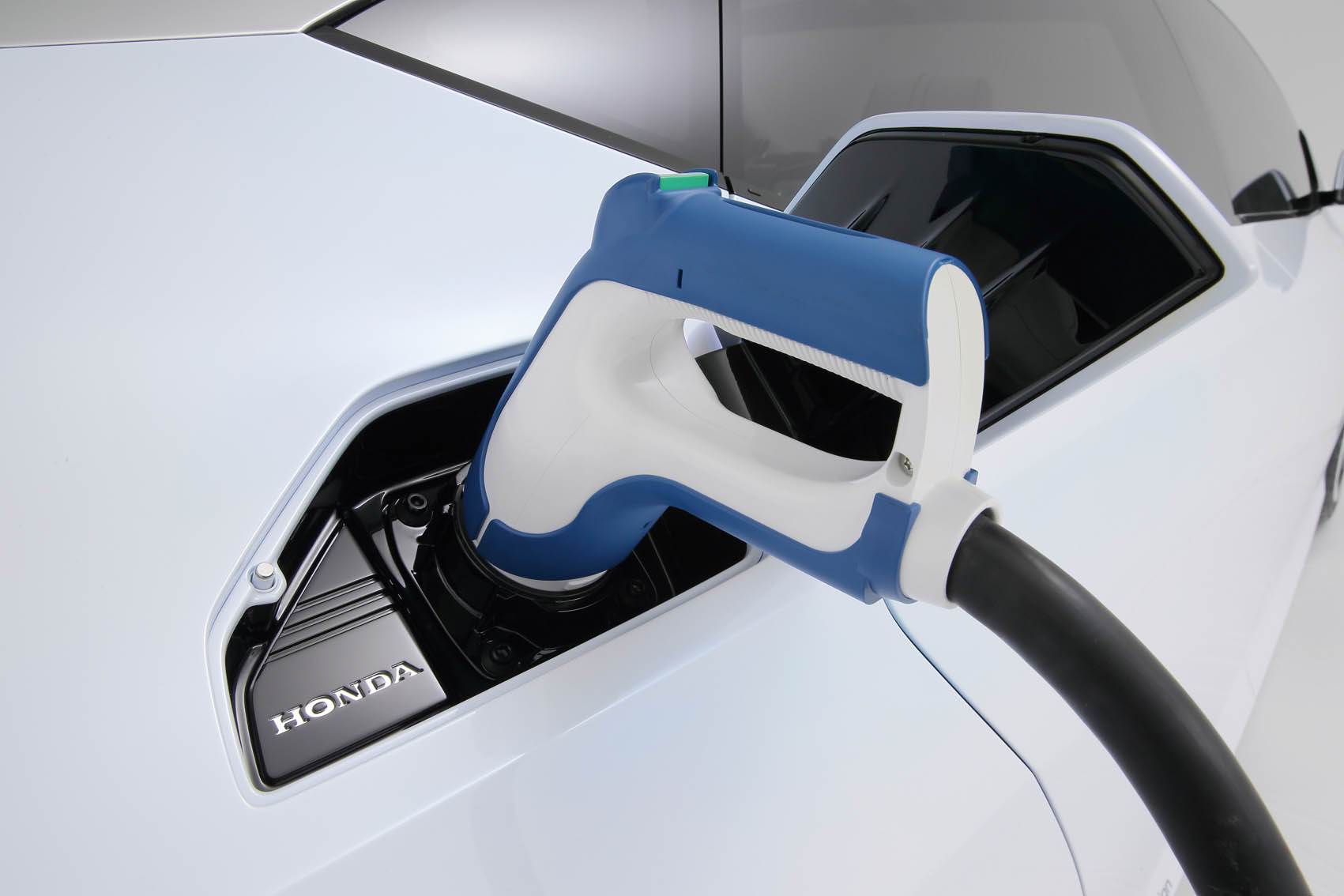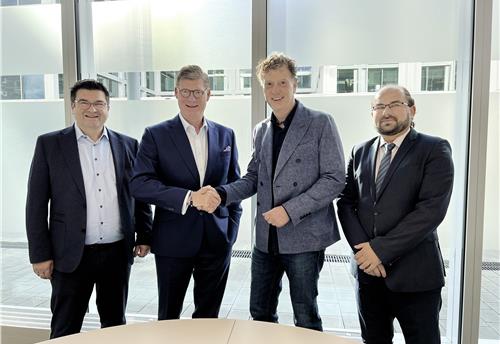Honda premieres its hydrogen-fuelled FCV Concept Car
Honda Motor Co today unveiled its FCV Concept, a concept car for an all-new fuel-cell vehicle (FCV), and the Honda Power Exporter Concept
Honda Motor Co today unveiled its FCV Concept, a concept car for an all-new fuel-cell vehicle (FCV), and the Honda Power Exporter Concept, a concept model for an external power feeding device that enables AC power output from the FCV with maximum output of 9 kW.
The all-new FCV that will be based on this concept model is scheduled to go on sale in Japan by the end of March, 2016 and subsequently in the US and Europe. In addition to the FCV and external power feeding device, Honda will further promote the application of the Smart Hydrogen Station (SHS), a packaged hydrogen station unit that adopts Honda’s original high-differential-pressure electrolyzer. In this way, Honda will work toward the forthcoming hydrogen society under three key concepts – ‘generate’,’ ‘use’ and ‘get connected’ – and strive for the early realisdation of a CO2-free society.
Honda views hydrogen as a high-potential, next-generation energy carrier due to the fact that hydrogen can be generated from various energy sources and is easily transportable and storable. Based on this view, Honda has been positioning the FCV – which uses electricity generated through the chemical reaction of hydrogen and oxygen as a power source for the motor – as the ultimate environmentally responsible vehicle and taking a proactive approach to the research and development of FCVs since the late 1980s.

In 2002, the Honda FCX became the first fuel cell vehicle in the world to be certified by the US Environmental Protection Agency (EPA) and the California Air Resources Board (CARB). With these certifications, Honda began lease sales of the Honda FCX in Japan and the U.S. In 2003, Honda developed the Honda FC STACK, the world’s first fuel-cell stack able to start at below-freezing temperatures. Then in 2005, Honda became the world’s first to begin lease sales of FCVs to individual customers in the U.S.
In 2008, Honda began lease sales of the FCX Clarity, an unprecedented fuel-cell vehicle that offers not only the ultimate in clean performance, but also new values and the appeal of a car, including an innovative sedan-type package and driving feel that is far beyond conventional vehicles.
The Honda FCV Concept is a concept car for Honda’s next-generation FCV, a successor model to the FCX Clarity, with which Honda strives to achieve a further improvement in performance and a reduction in cost. The newly-developed fuel-cell stack installed to this concept car is 33 percent smaller than the previous fuel-cell stack and yet realises output of more than 100 kW and output density as high as 3.1 kW/L, improving the overall performance by approximately 60% compared to the previous version of the fuel-cell stack.
Honda says its next-generation FCV will be the world’s first FCV sedan with the entire powertrain, including the downsized fuel-cell stack, consolidated under the hood of a sedan-type vehicle. This powertrain layout enables a full cabin package that seats five adults comfortably and also will make it possible to evolve this vehicle into multiple models in the future when the more widespread use of FCVs requires enhanced choices for customers.
The Honda FCV Concept is also equipped with a 70 MPa high-pressure hydrogen storage tank that provides a cruising range of more than 700 km. The tank can be refilled in approximately three minutes, making refueling as quick and easy as today’s petrol vehicles.
Furthermore, the Honda FCV Concept features an external power feeding function, which underwent a large number of verification tests with the FCX Clarity. When combined with an external power feeding device, this FCV can function as a small-sized mobile power plant that generates and provides electricity to the community in times of disaster or other events.
RELATED ARTICLES
ZF to display next-gen e-axle for low-floor city buses at Busworld Turkiye 2024
The AxTrax 2 LF is available with a continuous output of up to 360 kW and a peak torque of up to 37,300 Nm.
Daimler Buses and BMZ Poland to develop next-gen NMC4 electric bus batteries
The new battery generation NMC4 – succeeding the current NMC3 technology – will combine high energy density, resulting i...
Netradyne expands UK operations via partnership with Intelex
The collaboration between Netradyne and Intelex marks a substantial leap forward in advancing road safety and fleet mana...





 By Autocar Pro News Desk
By Autocar Pro News Desk
 17 Nov 2014
17 Nov 2014
 5916 Views
5916 Views









